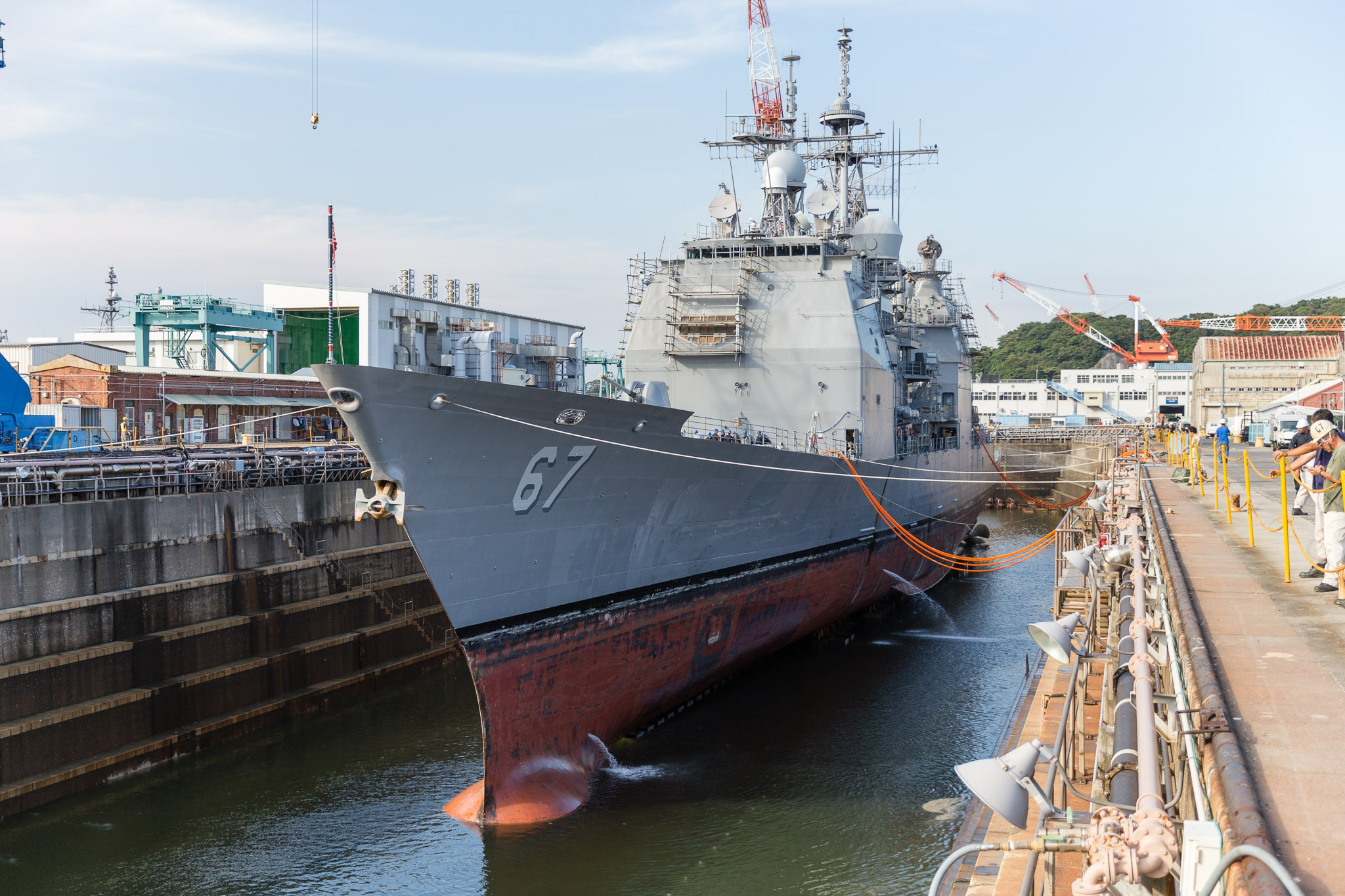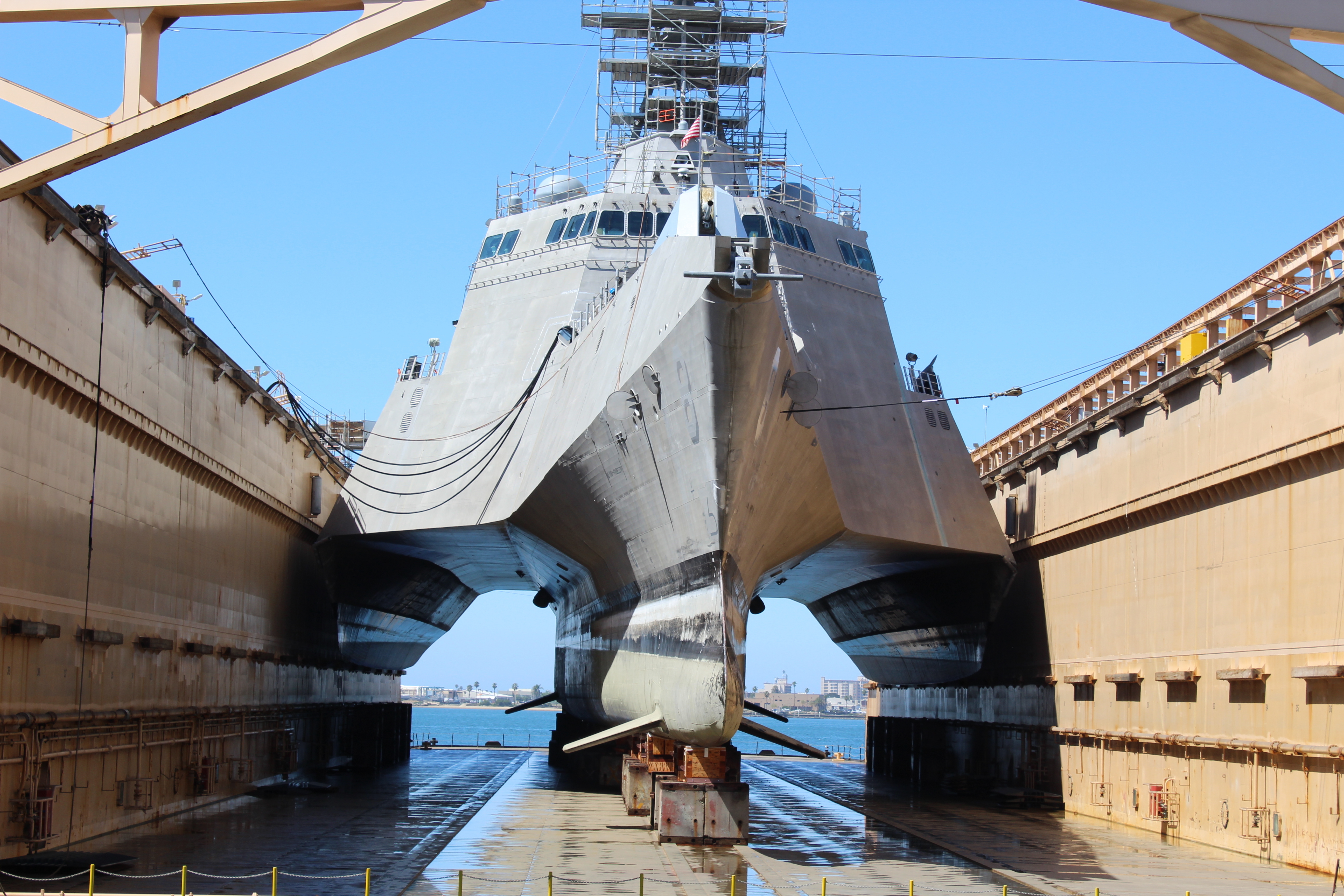
CAPITOL HILL – For all the struggles the Navy has today caring for its 106 surface combatants, the problem will only get worse: the fleet is set to increase by 60 percent between now and 2034, when the Navy will have 169 combatants in its inventory.
The Navy’s top acquisition chief said he’s confident that transparently laying out those upcoming challenges will encourage industry to make the right investments in their infrastructure and workforce and avoid further ship maintenance troubles in the coming decades.
Today, the Navy does not have enough dry docks at its disposal to care for cruisers, destroyers and Littoral Combat Ships. A mismatch in the number of ships and number of dry docks is one issue; ships coming into the yards late due to deployment extensions and ships coming out of repairs late due to unplanned work popping up exacerbate the situation.
Assistant Secretary of the Navy for Research, Development and Acquisition James Geurts decided nearly a year ago that more analysis and discussion of long-range ship maintenance requirements was needed. To that end, the first-ever long-range ship maintenance plan was released March 21. Geurts remains firm that having this discussion now will help the Navy and industry create more capacity and more efficient processes by the time the surface fleet peaks in size in the 2030s.
“When I looked at it, we had spent a lot of time analyzing and building the 30-year shipbuilding plan, which gave the industrial base a real clear signal on what was to come and then they could start making capital investment decisions. We were less clear and less transparent about the repair work,” Geurts told reporters last week.
“And that, in combination with kind of awarding each ship repair individually, was causing us to sub-optimize performance. So my whole purpose for that plan was to make sure we were very clear for us with the Navy, with Congress, with all of our industrial partners, the workload coming forward and then get better at planning the work, which would allow our industrial partners to get more efficient at executing the work.”
The long-range plan does multiple things. First, it lays out the expected workload for the repair and modernization industry based on anticipated ship inventory. Identifying the number of availabilities, the number of man hours, and the dollar value of the work helps both industry leaders and Navy planners see the wave of work coming in terms that make sense to them.
It also outlines two ongoing initiatives with the private yards to help address today’s maintenance backlogs. The Private Shipyard Optimization (PSO) looks for opportunities to invest in the yards’ layout and capital equipment to create a more efficient place to do ship repairs and upgrades. The Private Sector Improvement (PSI) plan looks to create better workload stability and thereby be able to use new contracting models that promote efficiency and on-time delivery of ships.
Today, the Navy awards contracts an average of 90 days before the start of a maintenance availability, limiting yards’ ability to hire new people or rearrange their workload to accommodate a new ship. Geurts’ goal is to bring that average to 180 days to allow for better planning. Geurts also said he had already reduced the number of inspections associated with ship maintenance work by 30 percent and hoped to eventually bring that down to 50 percent. He’s also increased on-the-scene leaders’ ability to approve changes to the work package once an availability starts, helping to curtail what can be lengthy pauses in work while the approval request goes up the chain of command.
Geurts said he hopes these better business practices will help ships get in and out of maintenance in a timelier manner, as well as encourage companies to spend money on yard and workforce investments that will be pivotal to the Navy’s and industry’s ability to keep up with demand in the next few decades.
“Our on-time availability is improving out of both the public and the private yards, but it’s not yet to the point where we need it to be,” he said of efforts so far.
“It’s not done in a vacuum; recently I met with all the CEOs of the major ship repair companies to talk about other things we can do, and I think there’s cautious optimism,” he added.
“I’m starting to see performance improve, I’m starting to see we’re using shipyards we hadn’t used previously. As noted, the demand is there, the challenge is to meet that demand as efficiently as we can with the right acquisition strategy.”

The Navy is also looking to increase the number of certified dry docks that can work on Navy warships. Currently, just 21 dry docks can be used for the surface ship fleet – and just seven are located in the Pacific to service the 60 surface ships there.
The service is in talks with other shipyards that have dry docks to see if they want to do business with the Navy, and Geurts said his organization has offered to certify facilities before companies even bid on any repair contracts to reduce the risk the yard takes and to grow the field of possible repair yards. The Navy has also spoken previously of talking to industry to gauge any interest in existing yards adding new dry docks – such as BAE Systems’ addition of a floating dry dock in its San Diego repair yard that took in its first ship in February 2017.
Despite the efforts to find more dry docks to work with, it’s unlikely the Navy will increase its dry dock capacity by 60 percent to keep up with the 60-percent increase in ships needing them. Asked if the business practice reforms were enough to make up for the difference, or if the Navy would need to take additional measures going forward to deal with the upcoming surge in surface ship maintenance needs, Geurts told USNI News, “when we’ve looked at it, industry responds to the demand signal we put out there. We were not clear in showing the composite demand signal, so a key element of that 30-year maintenance plan was so we could show the entire demand signal. And my experience has been, when we clearly articulate the demand, industry makes really good decisions on how to invest to help us deliver on that demand.”





